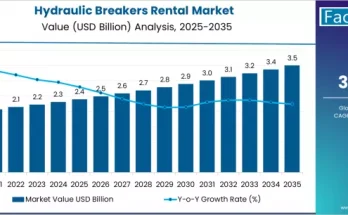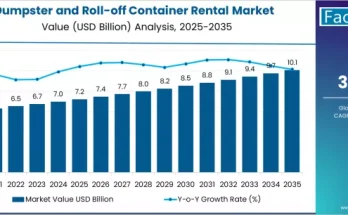As the construction, landscaping, and industrial sectors continue to expand globally, the skid steer rental market is emerging as a critical solution for businesses seeking versatile, cost-effective equipment. Skid steer loaders, known for their compact design, maneuverability, and multi-functionality, are widely used for excavation, material handling, grading, and site maintenance.
The growing preference for rental solutions over equipment ownership reflects the operational need for flexibility, reduced capital expenditure, and access to well-maintained, technologically advanced machinery. Rental services are enabling contractors, municipalities, and industrial operators to scale operations efficiently while minimizing maintenance and storage responsibilities.
Market Overview
The skid steer rental market is primarily driven by the demand for short-term, flexible equipment solutions across a wide range of applications. Renting skid steers allows businesses to access specialized attachments, such as buckets, augers, pallet forks, and trenchers, providing versatility without the commitment of ownership.
Modern skid steers feature advanced hydraulic systems, improved operator ergonomics, and enhanced safety measures, making them ideal for various environments, from tight urban construction sites to expansive industrial yards. In addition, the trend toward electric and hybrid models is gaining momentum, reflecting the construction and industrial sectors’ focus on sustainability and emission reduction.
Digitalization is also transforming the rental experience. Platforms offering online booking, fleet tracking, and maintenance scheduling are simplifying equipment management for both rental providers and end users. This digital integration ensures operational efficiency and timely access to required machinery.
Regional Insights
North America dominates the skid steer rental market, supported by a mature construction industry, extensive rental service networks, and strong demand for flexible equipment solutions. Municipal and industrial projects increasingly rely on rental skid steers for tasks such as road maintenance, landscaping, and utility installation.
Europe maintains a significant presence, driven by urban infrastructure development, renewable energy projects, and strict occupational safety regulations. The adoption of eco-friendly, low-emission skid steer loaders is accelerating across the region, in line with sustainability goals.
Asia-Pacific is an emerging growth market, fueled by rapid urbanization, industrial expansion, and rising infrastructure investments. Rental solutions are gaining traction among contractors and industrial operators seeking cost-efficient equipment for short-term projects, particularly in countries with high construction activity.
Latin America and Middle East & Africa are gradually expanding their adoption of skid steer rentals, propelled by industrialization, commercial construction growth, and the increasing presence of local rental service providers improving accessibility and affordability.
Key Trends & Forecast
The skid steer rental market is evolving under the influence of technological advancements, operational demands, and sustainability considerations. Key trends shaping the market include:
- Electrification and Sustainability: Rental providers are offering electric and hybrid skid steers to reduce emissions, lower operational costs, and comply with environmental regulations.
- Advanced Attachments and Versatility: The availability of a wide range of attachments enhances skid steers’ utility across multiple applications, increasing their value as rental equipment.
- Digital Rental Platforms: Online booking, fleet monitoring, and mobile management tools are improving transparency, convenience, and operational efficiency for customers.
- Project-Based and On-Demand Rentals: Flexible rental models allow contractors to scale operations according to project size and duration, optimizing equipment usage and budget allocation.
- Safety and Compliance Enhancements: Modern skid steers are equipped with safety features such as rollover protection, automated braking systems, and ergonomic controls, meeting stringent regulatory requirements.
These trends indicate a market that is increasingly service-oriented, technologically advanced, and sustainability-focused, catering to the evolving needs of construction and industrial sectors.
Applications & End-Use Outlook
Skid steer rentals are applied across a wide range of industries, offering operational efficiency and flexibility:
- Construction: Skid steers are widely used for excavation, grading, backfilling, and material transport on residential, commercial, and industrial sites.
- Landscaping and Groundskeeping: Rental skid steers facilitate soil preparation, debris removal, and site leveling, improving project efficiency and precision.
- Agriculture: Farmers and agribusiness operators rely on skid steers for tasks such as feed handling, trenching, and manure management.
- Municipal Services: City and county maintenance teams utilize skid steers for snow removal, street maintenance, and park landscaping.
- Industrial and Warehousing: Skid steers assist with material handling, logistics, and site organization, particularly in large-scale industrial environments.
By serving multiple end-use segments, rental companies can maintain consistent fleet utilization while supporting businesses across diverse project types and sizes.
Challenges and Opportunities
Despite significant growth, the skid steer rental market faces challenges, including high maintenance costs, operator skill requirements, and the need for reliable fleet management. Smaller rental providers may struggle with fleet standardization, equipment availability, and technology adoption, affecting operational efficiency.
However, these challenges also present opportunities. Rental providers are investing in telematics, predictive maintenance, and digital fleet management to improve reliability and customer experience. Additionally, the rise of eco-friendly and battery-operated skid steers offers opportunities to differentiate services and meet increasing environmental and regulatory demands.
Flexible, on-demand rental solutions further allow providers to capture project-based and seasonal demand, expanding market reach and enhancing profitability.
Conclusion
The skid steer rental market is becoming an essential component of the construction, landscaping, agriculture, and industrial sectors. Rental solutions provide businesses with the flexibility, safety, and cost-efficiency necessary to complete projects effectively, without the financial burden of ownership.
As technology integration, sustainability, and digital rental platforms continue to evolve, the skid steer rental market is poised for sustained growth. Companies that embrace flexible rental models, advanced equipment, and environmentally responsible solutions will be well-positioned to meet changing industry needs and achieve long-term operational excellence.
Browse Full Report – https://www.factmr.com/report/skid-steer-rental-market


